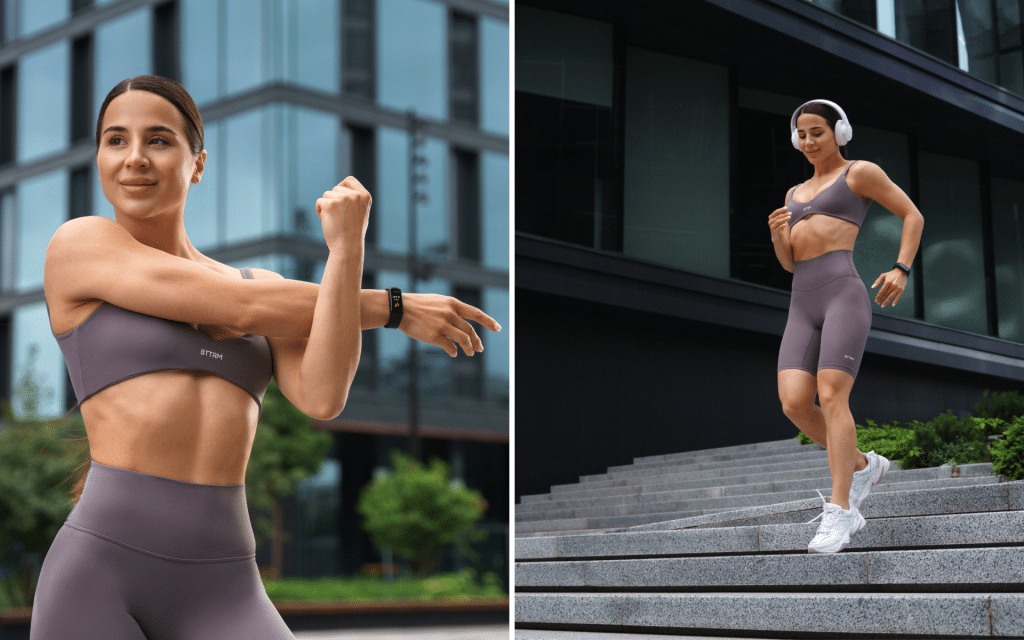Disclaimer
While GLP-1 receptor agonist medications are often prescribed to help manage both weight and diabetes, the information provided in this article is intended for individuals using these medications for weight management purposes only. If you have diabetes or other health conditions, please consult your healthcare provider first to determine the best approach for your needs.
To help achieve and maintain a healthy weight, combining medication with lifestyle changes may hold the key to success for some people. While GLP-1 medications can significantly help with weight loss, the way to maximize their benefits requires following an integrated approach. This includes focusing on proper nutrition, engaging in regular physical activity, managing stress, getting optimal sleep, and maintaining adequate hydration. We are here to provide a framework for just that.
Our guide will give you recommendations to support healthy weight loss for those using GLP-1s specifically for weight management.
What is GLP-1?
GLP-1, or glucagon-like peptide-1, is a hormone that plays an essential role in the body’s regulation of appetite, blood sugar, and insulin. Naturally produced in the intestines, GLP-1 helps maintain balanced blood sugar levels by prompting insulin release after meals. It also influences hunger signals in the brain, promoting feelings of fullness and helping people control their food intake (1).
Today, medications that augment the effects of GLP-1 have become significantly popular. With their abilities to induce weight loss, the rise of such medications has been profound, especially among those struggling to reduce calorie intake on their own.
Mechanism of Action of GLP-1
GLP-1 medications work by imitating the effects of the natural hormone GLP-1. Below we understand how these medications support weight loss and overall metabolic health:
1. Slows Gastric Emptying i.e. Reduces Rate of Digestion
GLP-1 medications slow down how quickly food leaves the stomach. This effect not only helps stabilize blood sugar levels after eating but also prolongs the feeling of fullness. This means you’re likely to not end up snacking or overeating throughout the day (2).
2. Reduces Appetite by Targeting Brain Signals
These medications interact with the receptors in the brain that control hunger, making it easier for those who use them to feel more satisfied with smaller portions. The reduced urge to eat can be especially beneficial for those who have difficulty with portion control. This also makes sticking to a calorie deficit easier (2).
3. Enhances Insulin Sensitivity
GLP-1 medications increase insulin release when blood sugar is high, helping cells better absorb glucose from the bloodstream. This action reduces fluctuations in blood sugar. Basically, this steadiness of blood sugar levels helps you avoid those energy crashes that can lead to cravings (3).
4. Supports Fat Loss with Minimal Muscle Loss
One concern with weight loss is the potential loss of muscle mass, which can lead to a slower metabolism. While the main focus of GLP-1 medications is on fat reduction, loss of muscle mass is common, so it’s wise to pair the medication with strength training and protein-rich diets to support muscle retention (4).
5 Tips for a GLP-1-Friendly Diet
GLP-1 medication users often experience a reduced appetite, leading to them eating much smaller portion sizes. Despite eating less, it’s very important to make each meal count by focusing on nutrient-rich foods to ensure the body gets all it needs. A well-rounded GLP-1 diet plan can help users maintain energy, build or retain muscle, and support long-term health.
1. Prioritize Lean Proteins
Eating enough protein is very important in order to preserve muscle during weight loss. Some of the best sources of lean protein include chicken, turkey, fish, eggs, and tofu. If you’re vegetarian or vegan, beans, lentils, and protein-rich grains, such as quinoa are excellent choices.
For those struggling to meet protein needs, a protein shake or yogurt smoothie can be a quick and easy option. Protein-rich foods can also make meals more filling, helping you feel satisfied longer. (5)
2. Incorporate High-Fiber Foods
High-fiber foods are essential for digestive health and can help counteract some of the digestive side effects of GLP-1s, such as constipation (6, 7, 8). Good sources of fiber include whole grains (such as oats, quinoa, and brown rice), vegetables (broccoli, carrots, and leafy greens), and fruits (apples, berries, and pears). One must aim to include a fiber source in every meal to keep digestion smooth and reduce uncomfortable bloating.
3. Limit High-Fat and Spicy Foods
High-fat foods, even healthy ones such as avocados and nuts, can sometimes exacerbate nausea in GLP-1 medication users. While fats are essential in this diet, try incorporating them in moderate amounts to avoid discomfort. In addition, some people may even find that spicy foods worsen side effects, such as acid reflux. Experiment with different foods and keep a journal if needed to identify any particular triggers that may be affecting your digestion. It’s always important to listen to your body—if certain foods feel heavy, it’s okay to adjust your intake of them.
4. Stay Hydrated
Hydration is essential for those on GLP-1 medications, as these medications slow gastric emptying and increase fullness, which can lead to dehydration related to decreased fluid intake (9). Aim for at least 8-10 glasses of water per day, and include other hydrating, zero-calorie beverages, such as herbal teas or sparkling waters, if plain water doesn’t feel appealing. Proper hydration also helps improve constipation and can prevent symptoms such as fatigue and headaches, which are sometimes reported by GLP-1 medication users (10).
5. Monitor Nutrient Intake
As GLP-1 medications are known to suppress appetite, users might eat less overall, which can lead to nutrient deficiencies if they aren’t mindful of their diet plan. It’s important to consume a variety of nutrient-dense foods, including fruits, vegetables, whole grains, lean proteins, and healthy fats, to cover all your nutritional bases. A multivitamin may also be helpful if you’re concerned about meeting your daily needs, though it’s best to discuss this with a healthcare provider.
Read More: Intermittent Fasting Weight Loss Plateau: Why it Happens and What to Do
How to Exercise While on GLP-1?
Another important part of the GLP-1 life is working out. Exercise is an essential part of any and every weight management plan, and it complements GLP-1 medication by enhancing muscle retention, improving metabolism, and supporting cardiovascular health (11). Here’s how to safely incorporate different types of exercise while on GLP-1s:
Aerobic Exercise
Cardiovascular activities, such as brisk walking, cycling, swimming, or dancing, can help burn calories and improve heart health. Aim for about 150 minutes per week of moderate-intensity aerobic activity (12). Start slow if energy levels are low, and increase the duration or intensity as and when you feel more comfortable.
Strength Training
Weightlifting and resistance exercises are also particularly important for GLP-1 medication users, as they help maintain muscle mass during weight loss (13). Bodyweight exercises (like push-ups, lunges, and squats) are effective, especially for beginners. As you build strength, consider using weights or resistance bands to increase the challenge and support muscle growth.
Flexibility and Balance Exercises
Yoga, Pilates, and stretching routines can improve flexibility, reduce stress, and support joint health. These low-impact activities are an excellent way to stay active on days when you may not feel up for intense exercise. In addition, these exercises can improve balance and core strength, enhancing stability and reducing the risk of injury (14).
Gradually Increase Intensity
If you’re new to exercise or returning after a break, start with light workouts and gradually increase the intensity. Listen to your body and avoid overexertion, as GLP-1 medications can sometimes cause fatigue, particularly early in the treatment phase. Consistency is key, so aim for regular movement rather than pushing yourself too hard.
Can You Lift Weights on GLP-1?
Yes, and lifting weights is highly recommended for those using GLP-1 medications. Strength training exercises help counteract potential muscle loss associated with weight loss, helping maintain a higher metabolic rate. If you’re new to weights, start light and work on form. Consulting a trainer for guidance can be helpful for staying injury-free.
Can You Build Muscle While on?
Building muscle while taking a GLP-1 medication is possible, though it requires attention to both diet and exercise. Those on GLP-1 medications must focus on consuming sufficient protein and performing regular strength training exercises to promote muscle growth. While it may take longer to see muscle gains, consistency with weightlifting and a protein-rich diet can yield results over time.
Read More: Meal Plan for Weight Loss and Muscle Gain in Females
GLP-1 Side Effects and How to Manage Them
Here are a few common side effects of GLP-1 medications and some simple ways to manage them (15):
- Nausea
Start with smaller, frequent meals to reduce nausea and avoid foods that feel heavy or greasy. Eating slowly and drinking water between meals (rather than with meals) can also help reduce this side effect. Ginger tea or small amounts of ginger candies may also relieve mild nausea (16). - Constipation
Boosting fiber through foods such as vegetables, fruits, and grains can also be of help, along with staying hydrated. If issues persist, speak with your doctor about supplements. - Fatigue
If you feel fatigued, focus on nutrient-dense foods and get enough hydration to maintain energy levels. Mild exercise, such as a brisk walk or gentle stretching, can sometimes improve energy by boosting circulation and mood.
FAQs
Is taking a GLP-1 medication for weight loss safe?
When monitored by a healthcare provider, a GLP-1 medication is often safe for weight loss. Just keep an eye on side effects and talk to your provider if anything feels off.
What’s the average weight loss on GLP-1?
Weight loss can vary, but many people see an average reduction of 12–18% (semaglutide) or 15—20% (tirzepatide) of their initial body weight within 12 months (18, 19). Personal results will vary based on diet, exercise, and other individual factors.
Who should avoid GLP-1 medications?
GLP-1 meds may not be right for everyone. People with thyroid cancer, pancreatitis, or certain digestive issues may need to avoid them (17). It’s best to check with your doctor.
Final Thoughts
GLP-1 meds can be powerful tools for weight loss, but combining them with a balanced lifestyle makes all the difference. By focusing on a nutrient-rich diet, staying hydrated, and finding an exercise routine that works for you, you’ll set yourself up for long-term success. And remember, every journey is unique – ask your healthcare provider for guidance along the way.
DISCLAIMER:
This article is intended for general informational purposes only and does not serve to address individual circumstances. It is not a substitute for professional advice or help and should not be relied on for making any kind of decision-making. Any action taken as a direct or indirect result of the information in this article is entirely at your own risk and is your sole responsibility.
BetterMe, its content staff, and its medical advisors accept no responsibility for inaccuracies, errors, misstatements, inconsistencies, or omissions and specifically disclaim any liability, loss or risk, personal, professional or otherwise, which may be incurred as a consequence, directly or indirectly, of the use and/or application of any content.
You should always seek the advice of your physician or other qualified health provider with any questions you may have regarding a medical condition or your specific situation. Never disregard professional medical advice or delay seeking it because of BetterMe content. If you suspect or think you may have a medical emergency, call your doctor.
SOURCES:
- Glucagon-Like Peptide-1 (GLP-1) (2019, ncbi.nlm.nih.gov)
- Mechanisms of Action and Therapeutic Application of Glucagon-like Peptide-1 (2018, sciencedirect.com)
- GLP-1 receptor activated insulin secretion from pancreatic β-cells: mechanism and glucose dependence (2012, pmc.ncbi.nlm.nih.gov)
- Relationship between diet/exercise and pharmacotherapy to enhance the GLP‐1 levels in type 2 diabetes (2019, pmc.ncbi.nlm.nih.gov)
- Dietary protein and appetite sensations in individuals with overweight and obesity: a systematic review (2020., ncbi.nlm.nih.gov)
- Managing the gastrointestinal side effects of GLP-1 receptor agonists in obesity: recommendations for clinical practice (2021, tandfonline.com)
- Fiber Content of Foods (2021, nutrition.va.gov)
- Foods high in fiber: Boost your health with fiber-rich foods (2024, health.harvard.edu)
- Effects of glucagon-like peptide-1 receptor agonists on fluid intake in healthy volunteers(2020, pubmed.ncbi.nlm.nih.gov)
- GLP-1 diabetes and weight-loss drug side effects: “Ozempic face” and more (2024, health.harvard.edu)
- Health benefits of physical activity: the evidence (2006, omc.ncbi.nlm.nih.gov)
- Physical activity (2024, who.int)
- Fitness for People Taking GLP-1 Agonists: A Comprehensive Guide (n.d., massgeneral.org)
- The Impacts of Pilates and Yoga on Health-Promoting Behaviors and Subjective Health Status (2021, pmc.ncbi.nlm.nih.gov)
- Clinical Recommendations to Manage Gastrointestinal Adverse Events in Patients Treated with Glp-1 Receptor Agonists: A Multidisciplinary Expert Consensus (2022, mdpi.com)
- The Effectiveness of Ginger in the Prevention of Nausea and Vomiting during Pregnancy and Chemotherapy (2016, pmc.ncbi.nlm.nih.gov)
- Pancreatitis, Pancreatic, and Thyroid Cancer With Glucagon-Like Peptide-1–Based Therapies (2015, pmc.ncbi.nlm.nih.gov)
- Efficacy of GLP-1 RA Approved for Weight Management in Patients With or Without Diabetes: A Narrative Review (2022, pmc.ncbi.nlm.nih.gov)
- Tirzepatide Once Weekly for the Treatment of Obesity (2022, pubmed.ncbi.nlm.nih.gov)












